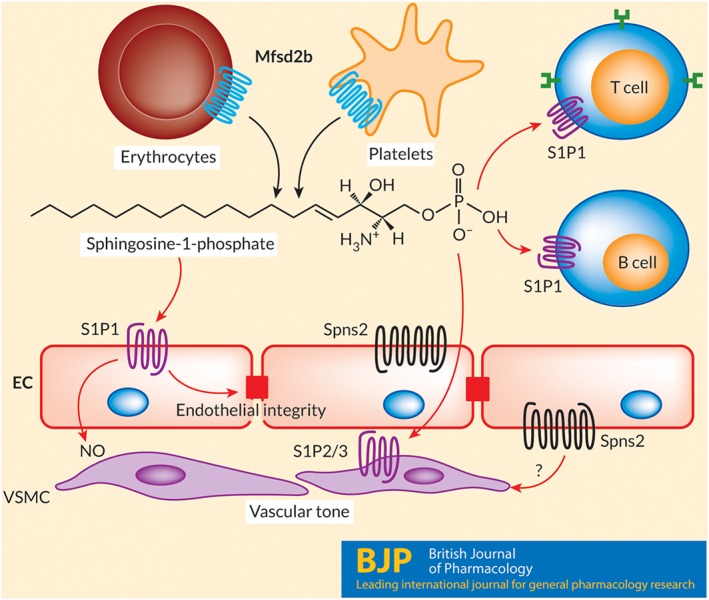Figure 1.

Extracellular signalling roles of S1P. Sphingosine‐1‐phosphate is transported out from haematopoietic cells by Mfsd2b and by Spns2 from endothelial cells. S1P plays a role as an extracellular signalling lipid in which it activates five different GPCRs, namely, S1P1–5. The S1P1 receptor (S1P1) is one of the most abundant receptors expressed in blood endothelial cells and T and B lymphocytes. In blood, S1P is mainly generated by erythrocytes and platelets. Mfsd2b is the transporter for S1P in these cells. In the endothelium, S1P is released via Spns2, especially in the lymphatic system. Both Mfsd2b and Spns2 contribute to blood S1P, which is critical for maintaining the functions of blood vessels via activation of S1P1 receptors on endothelial cells or S1P2/3 receptors (S1P2/3) on vascular smooth muscle cells. An active S1P signalling pathway is essential for blood vessel integrity and vascular tone. It is not known whether Spns2 releases S1P on both sides of endothelium. EC, endothelial cells; VSMC, vascular smooth muscle cells.
